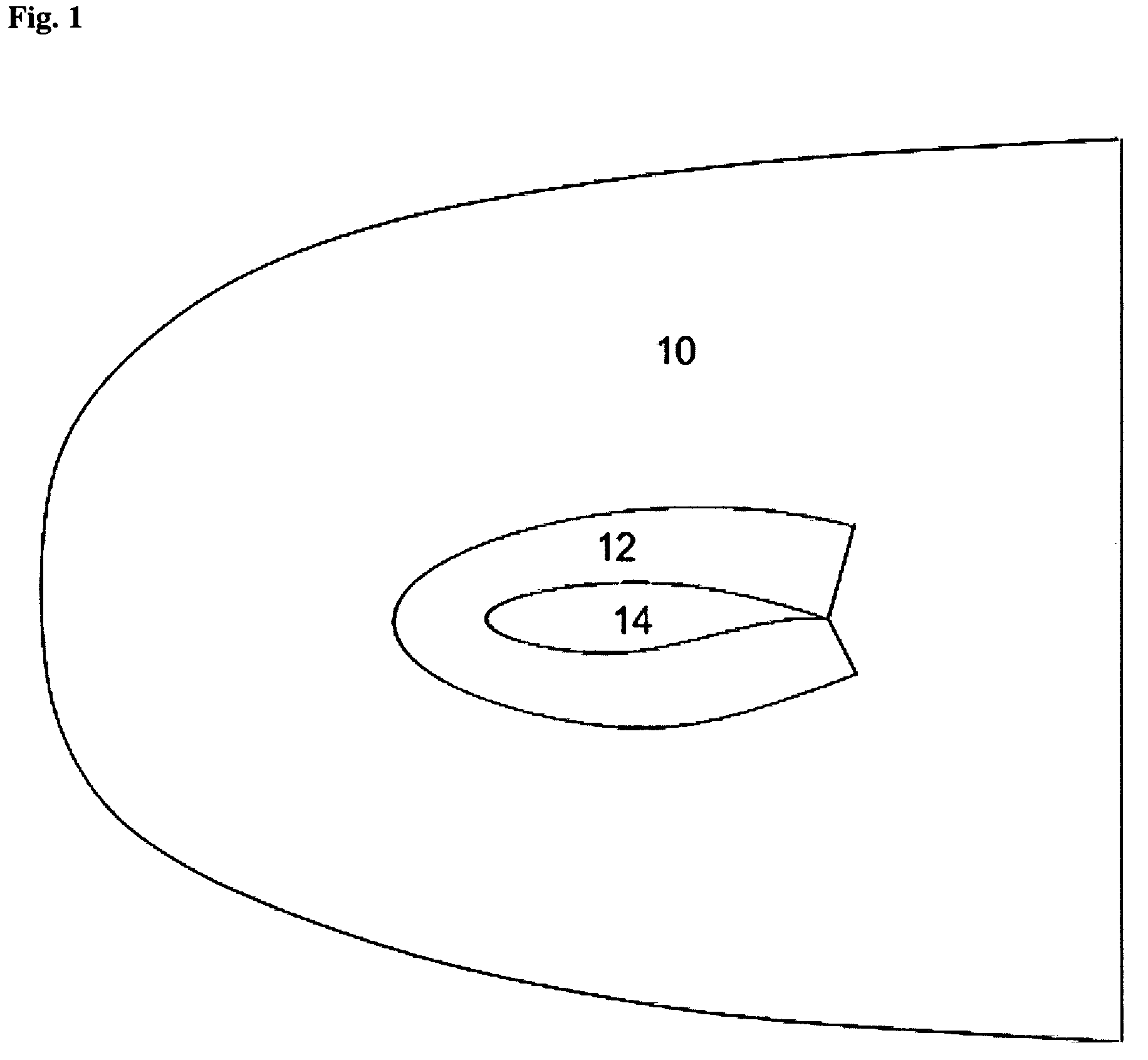Method for computing turbulent flow using a near-wall eddy-viscosity formulation
a near-wall eddy viscosity and computation method technology, applied in the field of computation of turbulent flow, can solve the problems of grid resolution scaling almost as expensive as direct numerical simulation (dns), les has not yet been applied successfully to wall-bounded flow at high reynolds number, and limiting les to low to moderate reynolds number
- Summary
- Abstract
- Description
- Claims
- Application Information
AI Technical Summary
Benefits of technology
Problems solved by technology
Method used
Image
Examples
Embodiment Construction
—PREFERRED EMBODIMENT—FIG. 1
[0025]The invented near-wall eddy-viscosity formulation has been developed as an ingredient of LES aimed at reducing its cost for turbulent flows around wings, blades and bluff bodies. FIG. 1 shows the conceptual application of the near-wall eddy-viscosity formulation to large-eddy simulation flow around an airfoil. The computational mesh (domain) around an airfoil 14 is split in two distinct regions: the outer LES region 10 and the near-wall region 12.
[0026]The invented formulation consists in replacing the instantaneous SGS eddy-viscosity, vtSGS, in the near-wall region of an LES with the invented near-wall eddy-viscosity, vtSGS,NW, defined with the following relation:
[0027]vtSGS,NW=vtRANS+u^′v^′_ / ⅆu^_ⅆy,(1)
as illustrated in FIG. 1.
[0028]In equation (1) the term
[0029]u^′v^′_
is the resolved Reynolds shear stress, û′ and {circumflex over (v)}′ are the instantaneous streamwise and wall-normal velocity fluctuations, defined as
[0030]u^′=u^-u^_
and
[0031]v^′=...
PUM
 Login to View More
Login to View More Abstract
Description
Claims
Application Information
 Login to View More
Login to View More - R&D
- Intellectual Property
- Life Sciences
- Materials
- Tech Scout
- Unparalleled Data Quality
- Higher Quality Content
- 60% Fewer Hallucinations
Browse by: Latest US Patents, China's latest patents, Technical Efficacy Thesaurus, Application Domain, Technology Topic, Popular Technical Reports.
© 2025 PatSnap. All rights reserved.Legal|Privacy policy|Modern Slavery Act Transparency Statement|Sitemap|About US| Contact US: help@patsnap.com



